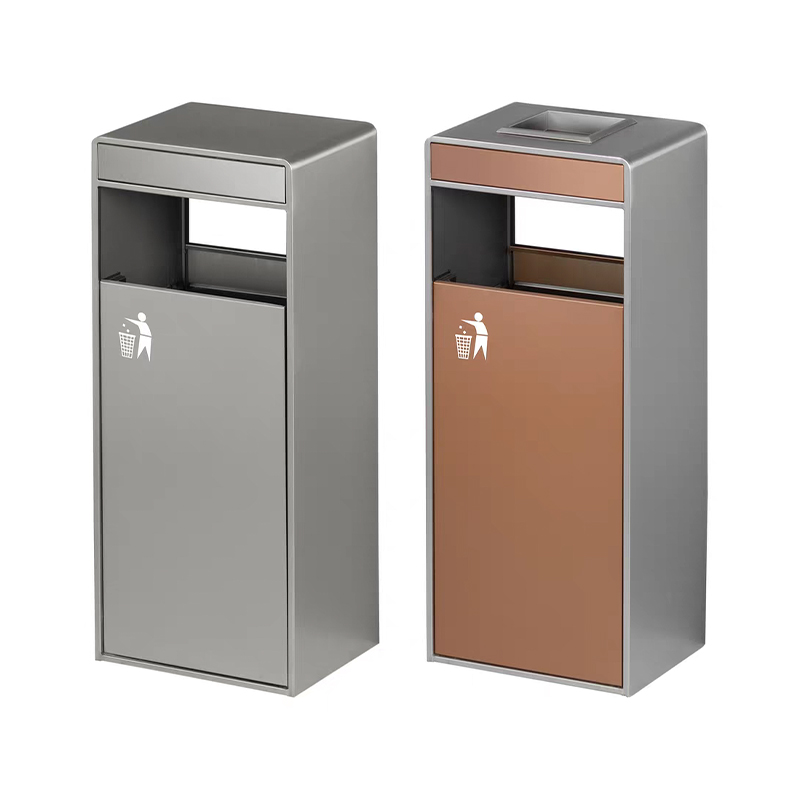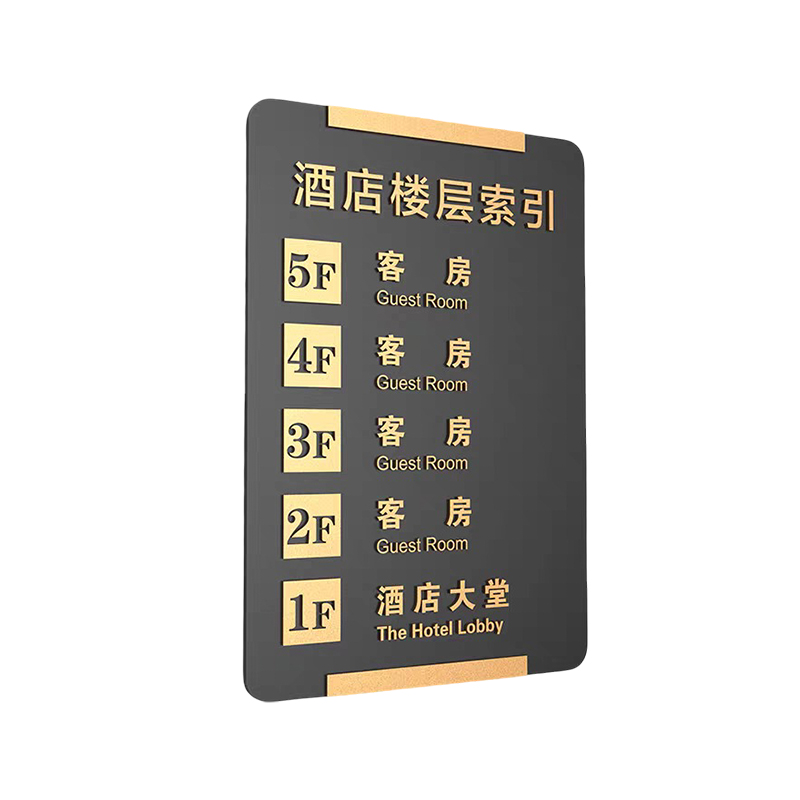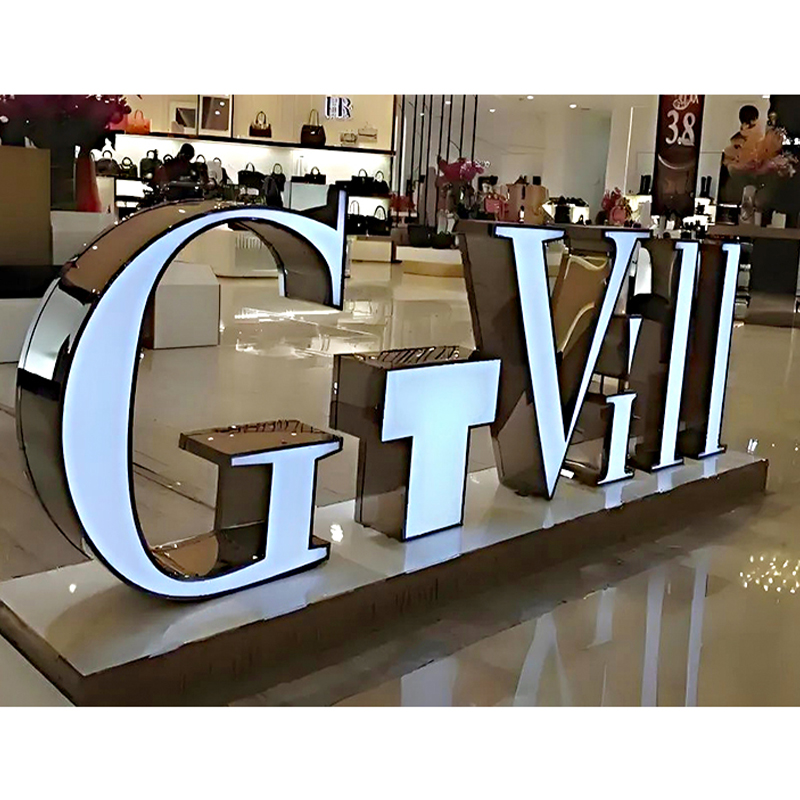How can we ensure the visibility of signage lightboxes in high-traffic airport environments?
Release Time : 2025-09-11
In high-traffic airport environments, signage lightboxes serve as a core wayfinding system, fulfilling key functions such as guiding passengers through the airport, providing diversion and flow control, and providing information. Faced with complex traffic flow, multilingual requirements, and high-density passenger flow, ensuring excellent visibility of lightboxes at all times and from all viewing angles has become a critical issue in modern transportation hub design. Through scientific structural design, advanced manufacturing processes, and intelligent lighting technology, the visual appeal and operational reliability of signage lightboxes can be comprehensively enhanced.
1. Optimizing Optical Design: Achieving Uniform, High-Brightness Illumination
In airport environments, the visibility of signage lightboxes depends primarily on their luminous performance. To ensure clear display at long distances and under strong light interference, lightboxes generally utilize high-brightness LEDs combined with a built-in acrylic light-transmitting panel for secondary optical processing. The acrylic panel is precision-frosted or designed with light-guide points to effectively diffuse light, eliminating localized bright spots and dark areas, and achieving uniform illumination across the entire panel. Furthermore, the LED color temperature can be customized based on the function of each area—for example, the check-in area uses 5000K neutral white light to enhance concentration, while the rest area uses 4000K warm white light to create a comfortable atmosphere. Furthermore, by increasing LED density and optimizing lighting spacing, the lightbox content remains legible even near the terminal's glass curtain wall in strong sunlight.
2. Precision Manufacturing: Ensuring Structural Stability and Visual Purity
The manufacturing process of signage lightboxes directly impacts their appearance, quality, and long-term performance. Modern high-end lightboxes typically utilize fiber laser cutting technology to precisely cut the metal frame, ensuring straight edges and precise dimensions. The structure is then formed through CNC bending and precision welding, resulting in smooth and strong welds. Electroplating or spray coating provides excellent corrosion and abrasion resistance, making it suitable for the frequent cleaning and high humidity environments found in airports. Text and graphics are laser-engraved into the panel, achieving consistent depth and sharp edges. Combined with backlighting, they create a high-contrast visual effect. The overall structure is sturdy and durable, resisting even minor impacts in busy areas, ensuring continued stability of the signage function.
3. Scenario-Based Layout Design: Improving Dynamic Recognition Efficiency
Within the complex flow of airport traffic, the luminous intensity of a single lightbox alone is insufficient to ensure visibility; a systematic layout is essential. For example, at key points such as security checkpoints and transfer corridors, a multi-tiered system of suspended lightboxes is employed to create a continuous visual guidance chain. At boarding gates, wall-mounted lightboxes with optimized tilt angles are installed, allowing passengers to access information without looking up. Furthermore, the installation height, tilt angle, and spacing of the lightboxes are tested with simulated crowd flow to ensure that passengers of varying heights and movement speeds can quickly identify the content within a range of 3-15 meters. For international flight areas, bilingual or even multilingual layouts are used, and icons and color coding reinforce information hierarchy to reduce cognitive load.
4. Intelligent Control and Maintenance: Meeting the Challenges of 24/7 Operation
Airport signage lightboxes must operate 24/7, so their visibility must also account for light degradation and environmental changes over time. With an integrated light sensor controller, the lightbox automatically adjusts its brightness based on ambient light, boosting output during bright daylight hours and dimming appropriately at night to save energy and avoid glare. Furthermore, its modular design allows for quick replacement of LED modules and acrylic panels, reducing maintenance costs. Some high-end airports have implemented remote monitoring systems to monitor the lightbox's operating status in real time, providing immediate warnings in the event of malfunctions and ensuring optimal visual quality.
1. Optimizing Optical Design: Achieving Uniform, High-Brightness Illumination
In airport environments, the visibility of signage lightboxes depends primarily on their luminous performance. To ensure clear display at long distances and under strong light interference, lightboxes generally utilize high-brightness LEDs combined with a built-in acrylic light-transmitting panel for secondary optical processing. The acrylic panel is precision-frosted or designed with light-guide points to effectively diffuse light, eliminating localized bright spots and dark areas, and achieving uniform illumination across the entire panel. Furthermore, the LED color temperature can be customized based on the function of each area—for example, the check-in area uses 5000K neutral white light to enhance concentration, while the rest area uses 4000K warm white light to create a comfortable atmosphere. Furthermore, by increasing LED density and optimizing lighting spacing, the lightbox content remains legible even near the terminal's glass curtain wall in strong sunlight.
2. Precision Manufacturing: Ensuring Structural Stability and Visual Purity
The manufacturing process of signage lightboxes directly impacts their appearance, quality, and long-term performance. Modern high-end lightboxes typically utilize fiber laser cutting technology to precisely cut the metal frame, ensuring straight edges and precise dimensions. The structure is then formed through CNC bending and precision welding, resulting in smooth and strong welds. Electroplating or spray coating provides excellent corrosion and abrasion resistance, making it suitable for the frequent cleaning and high humidity environments found in airports. Text and graphics are laser-engraved into the panel, achieving consistent depth and sharp edges. Combined with backlighting, they create a high-contrast visual effect. The overall structure is sturdy and durable, resisting even minor impacts in busy areas, ensuring continued stability of the signage function.
3. Scenario-Based Layout Design: Improving Dynamic Recognition Efficiency
Within the complex flow of airport traffic, the luminous intensity of a single lightbox alone is insufficient to ensure visibility; a systematic layout is essential. For example, at key points such as security checkpoints and transfer corridors, a multi-tiered system of suspended lightboxes is employed to create a continuous visual guidance chain. At boarding gates, wall-mounted lightboxes with optimized tilt angles are installed, allowing passengers to access information without looking up. Furthermore, the installation height, tilt angle, and spacing of the lightboxes are tested with simulated crowd flow to ensure that passengers of varying heights and movement speeds can quickly identify the content within a range of 3-15 meters. For international flight areas, bilingual or even multilingual layouts are used, and icons and color coding reinforce information hierarchy to reduce cognitive load.
4. Intelligent Control and Maintenance: Meeting the Challenges of 24/7 Operation
Airport signage lightboxes must operate 24/7, so their visibility must also account for light degradation and environmental changes over time. With an integrated light sensor controller, the lightbox automatically adjusts its brightness based on ambient light, boosting output during bright daylight hours and dimming appropriately at night to save energy and avoid glare. Furthermore, its modular design allows for quick replacement of LED modules and acrylic panels, reducing maintenance costs. Some high-end airports have implemented remote monitoring systems to monitor the lightbox's operating status in real time, providing immediate warnings in the event of malfunctions and ensuring optimal visual quality.







